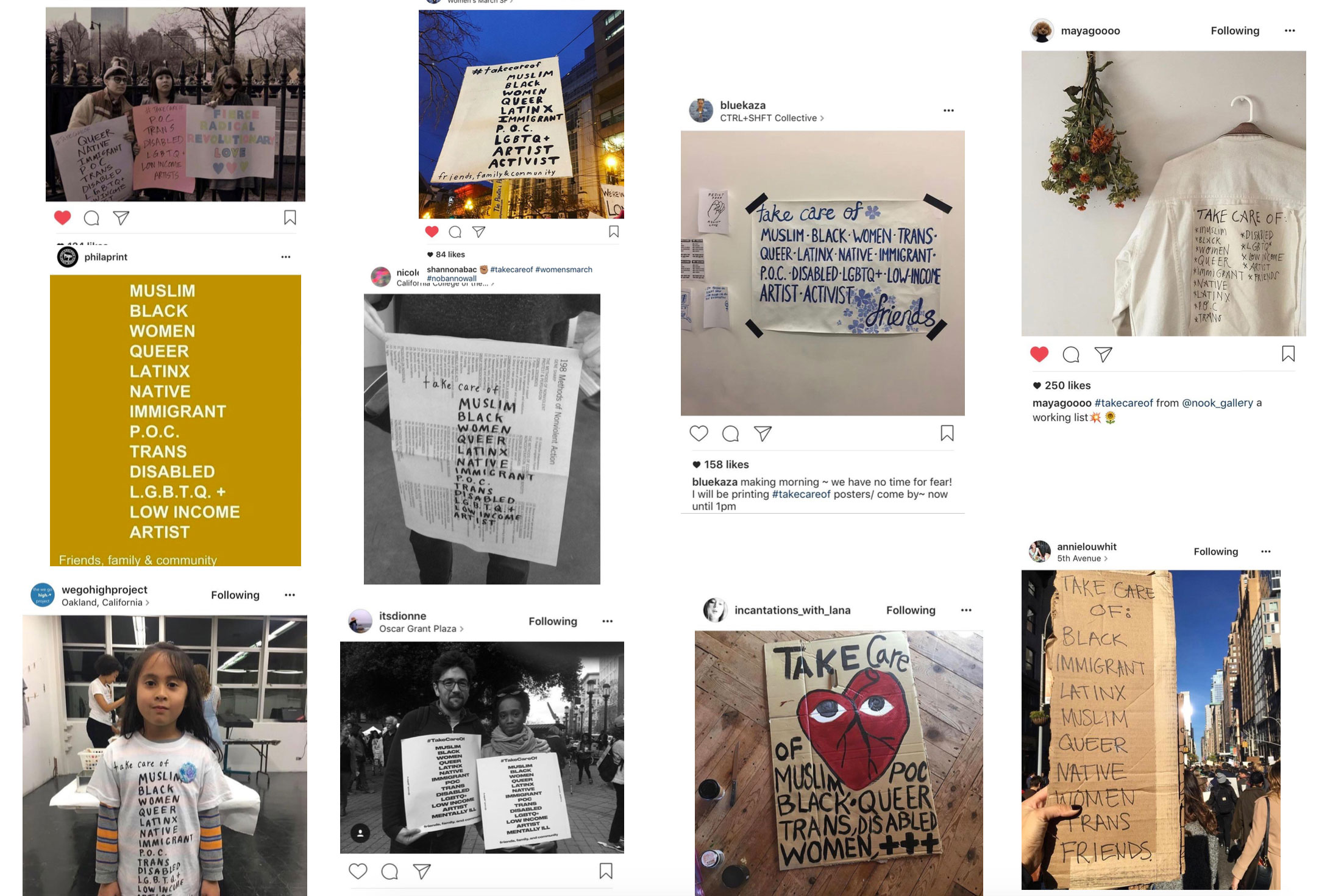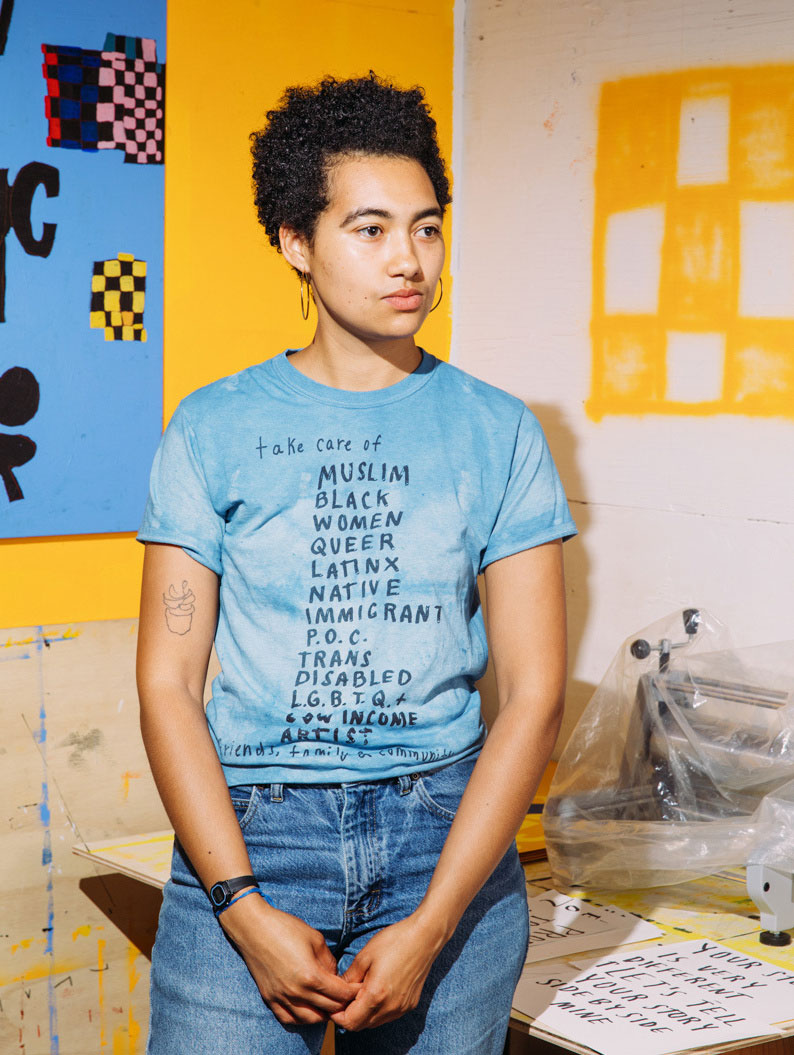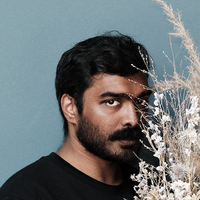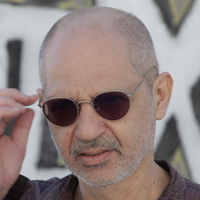As told to Elliott Cost, 2221 words.
Tags: Writing, Art, Painting, Research, Curation, Collaboration, Identity.
On taking notes on life
Artist Lukaza Branfman-Verissimo discusses a gallery's afterlife, taking care of the people around you, and the color of the future.Originally published on October 30, 2018
How would you describe Nook?
Nook Gallery is located in a built-in seating nook in my kitchen. It’s an intimate gallery space. It hopes to carve out an inclusive and accessible space to support and give room for emerging artists of color, women and queer artists, to exhibit and present work.
It’s a super unique space. It definitely asks artists to make very site-specific works and think about the unique location of the gallery. I think it fills some of the gaps and holes within the Bay Area around spaces for marginalized emerging artists, while also being a non-institutional space.
Art openings can be such terrible places to socialize. It’s nice that the architecture of the Nook provokes dialog among strangers in an intimate setting.
The space itself holds six people max if people are willing to squish in, so it’s definitely a little bit of a game at openings of how people experience the art. Visitors have to think a bit more about what it means to be in such an intimate space, both with the art and the fellow visitors.
Openings at the Nook definitely feel different than a regular gallery, but I think that is a good thing. At our most recent opening of new work by Bruna Massadas, the Nook was transformed into a mostly quiet listening zone for a podcast playing on a walkman with headphones that told the hidden stories behind the exhibited paintings. The podcast is around 30 minutes long and a few people who got there at the beginning of the opening jumped in and I’m pretty sure listened to it in full. As more and more visitors trickled in, it drew people into the space. Both watching this devoted act of listening and also squishing in to see what it was all about.

Ricki Dwyer’s exhibition, Every Rigid Object is a Body, at the Nook
All the documentation of the Nook includes people sitting in the space. It’s nice to see the people who actually visit a gallery. Usually installation photography is so void of people.
You had a successful GoFundMe for Nook recently. Can you talk about your plans for the Nook? Will it stay in its current space?
Yeah, I think that’s always kind of been in the back of my mind now that the space has existed for two years. The first two years were full of testing out what it meant to be a space in the Bay Area, figuring out how the Nook could be a relevant tool for the artists around us, and getting into the rhythm of operation.
We were really successful with our first fundraiser this past summer. We had such generous support from the community around that, and my plan at the moment is to continue doing our monthly programming within the space while kind of switching it up in ways that I haven’t done in the past. I plan on inviting guest curators, doing more one-night performances, and maybe even doing exchanges with other galleries locally and nationally. I just plan to tune in to some of the interesting things that are going on around me and see how other spaces could be a part of these conversations.
There’s a two-month-long workshop series happening in January and February. I’m inviting an educator, a ceramicist, a chef, a community activist, and an herbalist into the space to think about and explore the theme of “care.” How do we continue to care for each other and ourselves in such dire times? It might look like a workshop or a dialog or meals or a reading group.
Also, it’s been super helpful to know that this whole project isn’t just coming out of my personal pocket and heart at this point—that I can afford to run a space like this in the crazy pricey Bay Area, that I can get paid for my labor and pay participating artists/make their wild Nook dreams come true.
You recently began an interview series in the Nook.
We’ve been partnering with Cranium Corporation which is run by artist, thinker, and educator Angel Rafael Vazquez-Conception. We started conducting these podcast interviews two shows ago. He reached out to me about the partnership and I really loved the idea that the artists showing at Nook could have the space to dive into all the meaning behind the work and also share that with the world. Hopefully this partnership will continue for a while longer and all the interviews can then get archived on the CC website.
I’ve been thinking a lot about how the work, exhibitions, experiments, and people that have been brought into the Nook over the past two years can be shared with the larger world. How does that work continue and become a tool for the future? When an exhibition happens, it’s traditionally been solely experienced by people who physically visit the Nook, and me and my housemate who get to live within it (lucky us).
I’ve also been thinking a lot about like, okay, I’m dedicating part of my life to making sure that queer, trans, people of color, and women artists get archived and their work gets processed and shown in the world. How does that not only become an experience for the people who visited Nook but also a larger tool?
 dedicated to caring for each other, 2017
dedicated to caring for each other, 2017
That’s interesting. It’s cool to think about a gallery living on in a different form. So many apartment galleries are such fleeting projects.
In the moment, Nook is a physical space and platform and that’s a dream, but what will happen if I ever move away or can’t afford to live in this space? Can Nook be more than just a physical space? I’m working on a new/real website for Nook Gallery, thanks to the funding we’ve gotten. And I really want a huge component of that to be a section for archiving our work and letting it be a resource and a tool for the artists to show and figure out how they want their work to live on. I have been thinking of it as more than a website to be honest, like it will look like one but be more than that. I want it to embody the feeling of the Nook and be a useful resource and experimental space.
A few local presses have also contacted me about making some sort of printed matter documentation. I love all of these ideas but it really depends on the project and how the artist I am working with wants their work to live on.
It would be cool if there was a guide that would teach people how to make their own Nook in their house.
Anything is possible.
Lists seem to be an important part of your practice. They are also really powerful documents. They can ban a group of people from a country. Activist slogans are usually short and catchy, whereas a list is pretty verbose. Can you talk a little bit about the Take Care lists you made?
I think part of having storytelling at the core of my work, or story preserving or story archiving, is how do we document the gaps and how do we document the stories of folks whose stories aren’t being told. The #Takecareof piece was definitely an iteration of that. It was made on the night of the 2016 election. Just kind of in a moment of, “What the fuck do we do?” The first iteration was made in collaboration with Shushan Tesfuzigta, just using sharpie on t-shirts and being like, Starting tomorrow, we will wake up and we must stand up for these people and hopefully we’re already standing up for these people in our lives, but even more so now. We have no choice but to care and to prioritize the work and the lives of these folks that are being targeted by the incoming administration.

It has taken many forms since that initial list. Posters, banners, screen print… I started just inviting people over to my studio and told them to bring paper or a t-shirt, and I would screen print it for free. I’d invite people to make their own forms, too. Its current form is a huge stack of risograph prints that I hand out to students and community members who want them and use them in protests or hung up on a community bulletin board or in a classroom or a window.

#takecareof t-shirt printed for the community, 2018
When you’d have these list-building parties, it’s cool that people would make their own version of the Take Care list and add to it or rearrange it. Lists are personal in that way.
I’ve always taken notes. I always thank my middle school English teacher for assigning homework where we had to take notes, and then he would check that we had annotated our homework, or whatever. I really took that to heart and feel like just taking notes on life is where a lot of my content comes from: some song that I’ll hear or a protest chant or taking notes after reading the news or on how I’m feeling or conversations that I’ve had with friends or family. Sometimes it’s just a list on my phone because I’m on public transportation and need to write something down, but usually it’s in my notebook/sketchbook. Then it’s a matter of coming back to my studio and compiling what stories I’m going to tell. Dealing with text has definitely been a challenge, but also something that I’ve learned to love. It’s something that we’re so used to. We read constantly but it’s more about thinking what is it about the text that’s going to be useful in telling these stories. How can it either camouflage, so that only some people are able to understand it, or challenge other people to read it or be clear and legible.
 Left to right: As Bright as Support and Safety and Care and Trusting, 2018; As Bright as The Complexities of Blackness, 2018
Left to right: As Bright as Support and Safety and Care and Trusting, 2018; As Bright as The Complexities of Blackness, 2018
Could you talk a little bit about your use of color in your work? It seems like you gravitate towards certain colors, especially blue and yellow.
I never actually think of it as like, “Oh, now I’m in a color exploration.” I feel like I’m just using these colors because I need to use them in specific works. For example, for the last three or so years, I’ve been exploring the history of indigo blue. I started this research while I was studying at California College of the Arts, being interested in the color and its diaspora to the Americas, a similar path to how my family and my roots came to the Americas. So, in that way, it was like, “I’m using this color but I’m also using it to understand where it comes from.”
More recently I’ve been doing a lot of work with the color yellow. Not necessarily because I was like, “And now I make yellow work,” but more so because I was making this new body of work that was all about imagining this future universe, a bright future, a shining state, where queer, trans, people of color are at the forefront of our thoughts—where we all feel supported, where fighting for justice is a part of our every move. It felt like in order to envision that future I had to imagine these ideals that don’t necessarily exist now. I needed to fully embody a color, or just use the color as a metaphor.
On a different note, as I open up my color palette, I’m starting to understand why I’ve been selective about colors. And now it’s not just about the content but also about how the colors can be tools into understanding the work more deeply.
Your practice and Nook gallery seem to be closely related. Do you think of them as distinct or do you see yourself weaving them together in the future?
Since starting Nook Gallery, it’s opened my eyes to curating in a way that’s really exciting for me and it feels like this is a continuation of a lot of the organizing, activism, and arts education work that I’ve been doing for quite some time now. In addition to the curatorial work I do at the Nook, I just joined the Curatorial Counsel at Southern Exposure, which is “an artist-driven, collaborative research and project-focused group.” I didn’t know that I would ever enter into the world of curating, especially as someone who is usually in the artist seat, but it feels like it goes hand-in-hand with my studio practice and it’s so exciting. They support and challenge each other and make each other stronger.
-
Chosen Family
-
Prioritizing and caring for Q.T.P.O.C. (queer, trans, people of color)
-
Spending time in Joshua Tree National Park
-
A good sweaty dance party





